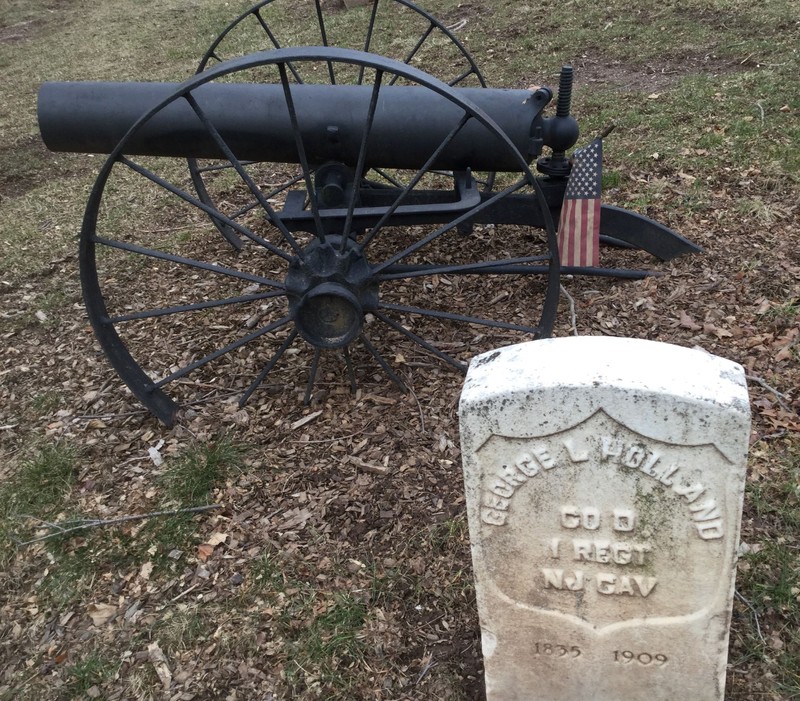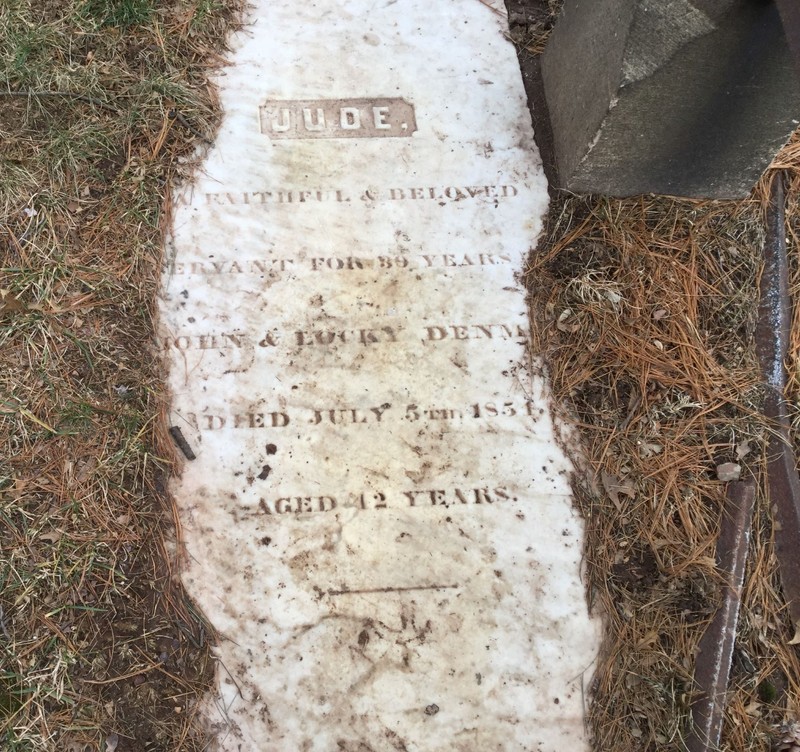Fairview Cemetery
Introduction
Text-to-speech Audio
Images
Fairview Cemetery map. Civil War Soldier section in red area, Denman family section in blue area.
.jpg)
Headstone of George L. Holland, Area G

Headstone of Jude, servant of the Denmans, Area A

Backstory and Context
Text-to-speech Audio
When the Burial Grounds of the Presbyterian Church became crowded, Fairview Cemetery was opened in 1868 to afford more burial space. Fairview is notable for its unsegregated burial site of Civil War soldiers and for the plot of an indentured servant buried with the family she served.
One of the families re-interred in the Fairview Cemetery was the Denman family. Their servant, Jude, is buried near them, having died in 1851 at forty-two years of age after 30 years of service. The Denmans inscribed her headstone to “Jude, a faithful and beloved servant.” At the time that Jude lived, the law in New Jersey was that children born of slaves after July 4, 1804 were to be free though they remained servants of the owner of their mother for a specified period (25 years for a man and 21 years for a woman). This enabled owners to continue to appropriate the labor of the children of their slaves. Since Jude was born after the 1804 act, and therefore was born free, she continued as a servant of the Denman household.
Though New Jersey was the last state to ratify the Thirteenth Amendment, Fairview Cemetery’s Civil War section reflects Westfield’s evolving attitude. The graves of African American Civil War soldiers are buried in Ward G with full honor in a majestic spot along with their white peers. This may be, in part, due to the advocacy of the Grand Army of the Republic, a fraternal veterans organization formed in 1866 that was among the first organized advocacy groups supporting voting rights for Black veterans. Mindful of the demonstrated loyalty and sacrifices of the African American soldiers in the Civil War, the Grand Army pushed for honorable burials. Note that most Black soldiers did not receive any pension or remuneration for wounds incurred during the Civil War. The names and lot numbers in Ward G of the African American Civil War soldiers are as follows:
John Brinkerhoff , died 1911 (age 72), Lot 2
Milton A. Brown, died 1911 (age 59), Lot 147
Edmund D. Chamberlain, died 1891 (age 50), Lot 68
George L. Holland, died 1909 (age 74), Lot 2
James H. White, died 1929 (age 82), Lot number unavailable
Sources
Smith, Geneva, “Legislating Slavery in New Jersey,” Princeton & Slavery Project, available at https://slavery.princeton.edu/stories/legislating-slavery-in-new-jersey.
Elisa Sananman
Elisa Sananman
Elisa Sananman
